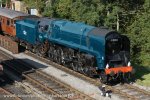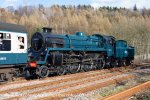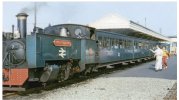I think it's fair to say German (BDR) steam "made it" into the 70s, sure. There was some wonderful old P8 stuff going (just) in 73 in the Tubingen area, with modern stuff - pacifics and 2-8-2s on the Rheine - Emden line until, was it 76 or 77?
But French steam was really winding down by 1970, and after September that year, when Calais - Boulogne - Amiens went 98% diesel, I think there was only a bit around Narbonne and Sarreguemines (spelling?). Oh, I forgot the Paris Nord suburban workings. with 141TCs, which went electric in November or December 70.
What France did that BR most certainly did not do was allow steam to be fired up when needed, so odd workings carried on for some years. I saw a 141R work out of Sarreguemines in April 1973, but I don't think you could guarantee seeing anything every day.
So yes, technically, SNCF steam did 'last' until, I think, 1975 - but in reality, there was damn all to see after the end of 1970. (Unless there was more in the Narbonne area that I've forgotten about. It was a darned long way away, and if you were going that far, you might as well carry on to Spain and Portugal - which was what I did!)
I think the best answer for the OP would be to see the costings - how long were the Standard designs amortised over? And let's not forget the rebuilds of the Bulleid pacifics, which were going on until 1960 or so? (And costing a fair whack!) I'd expect they were all costed for a lifetime of 30 years, so sometime into the 1980s.





